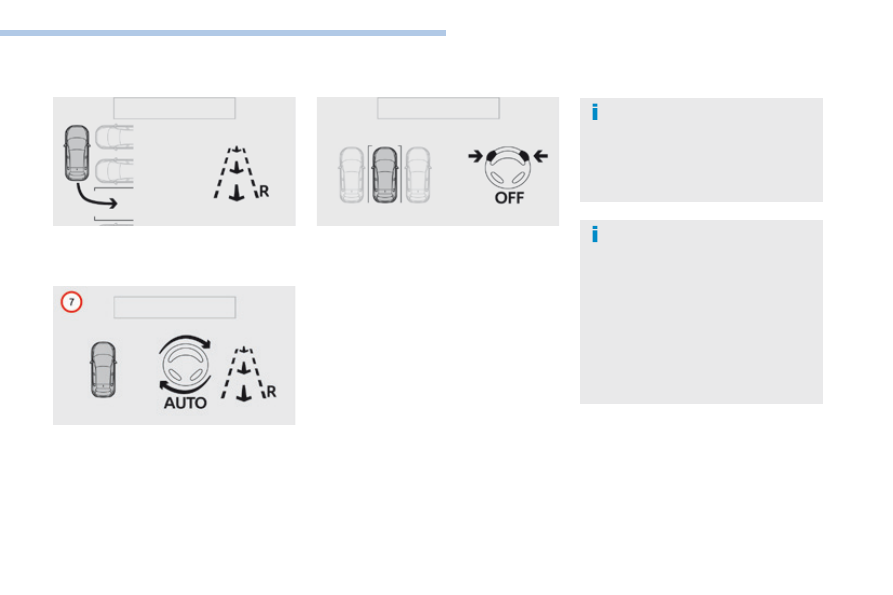Peugeot 308 (2017 year). Instruction - part 14

207
6
Driving
308_en_Chap06_conduite_ed01-2016
F Select reverse, release the steering wheel
and start moving without exceeding 4 mph
(7 km/h).
F the assisted parking manoeuvre is in
progress.
Without exceeding 4 mph (7 km/h), follow
the instructions displayed in the instrument
panel, aided by the warnings from the
"Parking sensors" system, until the
indication of the end of the manoeuvre.
At the end of the manoeuvre, the operating
indicator lamp goes off in the instrument panel,
accompanied by a message and an audible
signal.
the assistance is deactivated: you can take
over control.
During parking and exit from
parking manoeuvres, the reversing
camera function may come into
operation. It facilitates monitoring of
the surroundings of the vehicle, by
displaying additional information in the
instrument panel.
For more information on the Reversing
camera, refer to the corresponding
section.
During a bay parking manoeuvre, the
Park Assist system is automatically
deactivated once the rear of the vehicle
is within 50 cm of an obstacle.